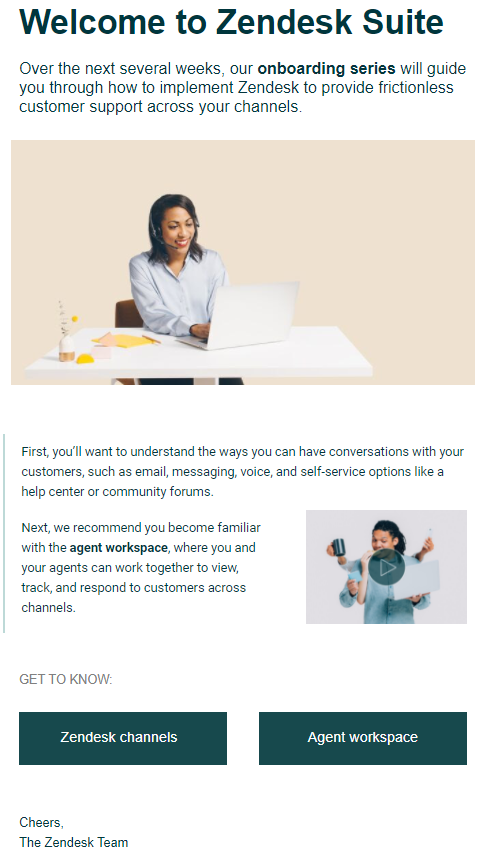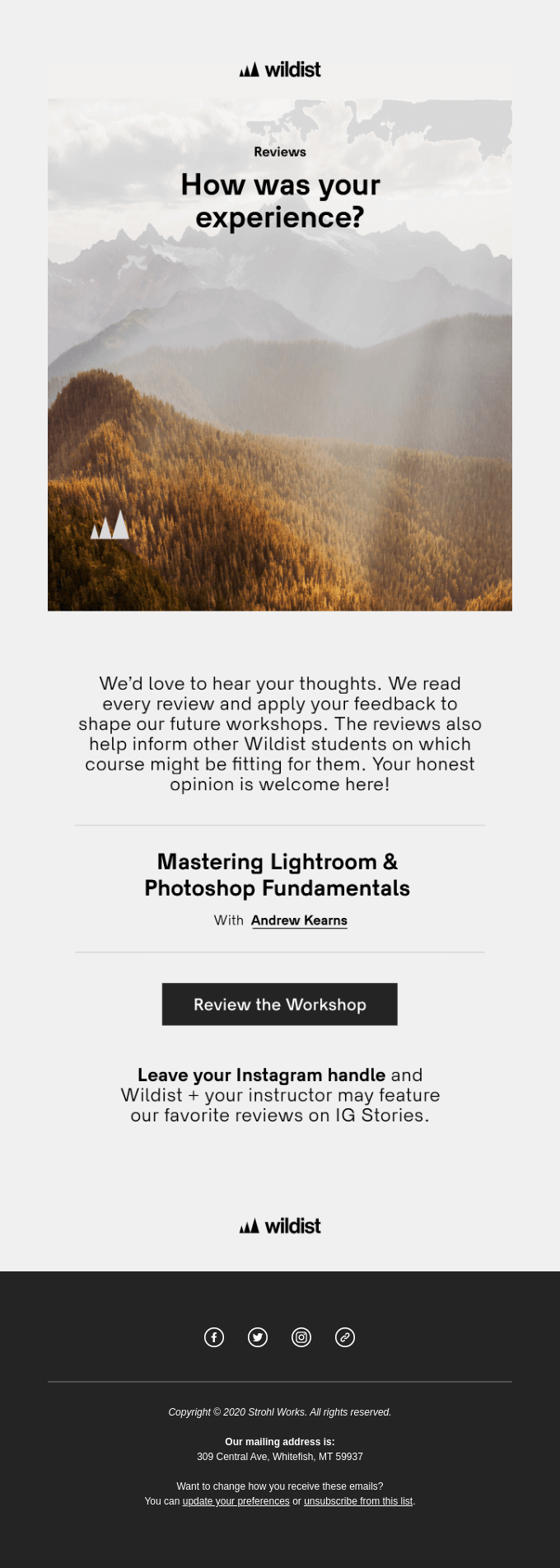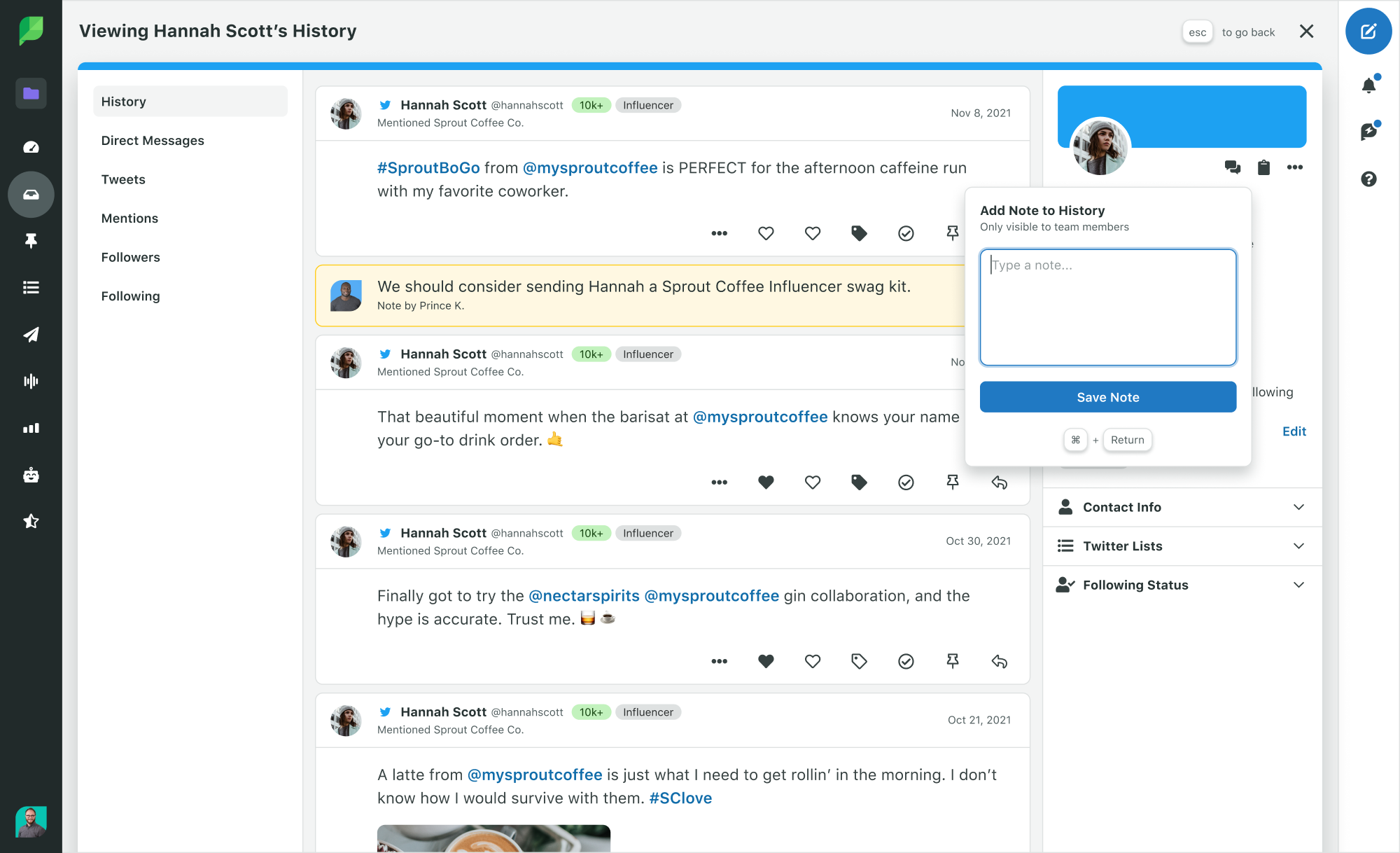Customer retention strategies for 2023
Written by Brent Barnhart
Published on June 6, 2023
Reading time 9 minutes

We’ve heard it time and time again: “It costs way more to acquire new customers than it does to retain the ones you have.”
And while the exact dollar amount is up for debate—with one study saying it’s around 6-7x more—there’s no denying that customer retention should be a top priority if you want your business to thrive long-term.
This is especially true as the average buyer’s journey is growing longer and competition for our audience’s attention is fiercer than ever.
Throughout this article, learn more about what customer retention means, how social media and social listening can play a role, plus several proven customer retention strategies you can implement today.
What is customer retention?
Customer retention is a metric that gives businesses insight into how many customers they’re keeping over a given period of time. The opposite of customer retention is customer churn, a metric that shows how many customers a company has lost over that same period of time.
The formula to calculate your brand’s customer retention rate is:
((# of Customers at End of Period – New Customers Acquired During Period) / # of Customers at Start of Period) x 100
As we mentioned, it’s common knowledge that keeping existing customers is cheaper and easier than acquiring new customers. Not only that, but a high customer retention rate can increase your overall customer lifetime value (more money in your pocket per customer) and reduce marketing costs.
This is why brands often put tactics into place to keep customers around for as long as possible—a few of which we’re going to explore shortly.
How can social media play a role in customer retention?
Social media can be a huge asset to customer retention due to its unique ability to facilitate connections between brands and their customers. Because brands and customers can communicate directly to each other, social media provides the perfect relationship-building outlet—as long as brands know how to effectively utilize it.
A few tactics to use include:
- Offer customer service on social media, helping clients and customers find solutions without having to leave their Twitter browser.
- Set up social media chatbots that can help customers complete actions or direct them to a live representative.
- Engage with your audience’s social media content, liking and responding to posts that either mention your brand or are relevant to your products/services/industry.
- Create content that your audience will enjoy and want to interact with.
- Promote ads and social media posts that are personalized to specific segments of your audience by taking advantage of audience targeting features.
- Share genuinely helpful and authentic content that makes your audience appreciate your brand.
Having an active presence on social media can be a great way to build relationships with your customers and make them want to continue buying from your brand.
Top 9 customer retention strategies
Don’t let your initial investment of time, resources, and relationship-building go to waste. Below are nine proven customer retention strategies that encourage folks to stick around for the long haul.
1. Invest in your onboarding process and customer resources
The importance of onboarding can’t be overstated when it comes to customer retention. This is the first interaction that a customer is having with your business after making their purchase decision—don’t make them regret it.
This realization turns onboarding into a make-or-break process. Ask yourself: are you empowering your customers to make the most of your product or service from the word “go?”
Doing so today requires a combination of resources. From self-service options to product videos and beyond, companies today should strive to put their onboarding materials front and center in as many formats as possible. This ensures that you appeal to all of your customers, not just a small set of them.
Zendesk does a brilliant job of onboarding, giving their customer base a whole slew of resources to get to know their product based on their customers’ needs.
For example, they kick things off with an onboarding email series with recommended next steps…

…meanwhile, their site is brimming with resources in a variety of formats. No matter how you prefer to learn, they’ve got you covered.

The onboarding study cited above also notes that three-fourths of people need to watch videos to understand a product fully. Zendesk acknowledges this, providing new customers with a variety of on-demand webinars to fully understand their products’ features.

And of course, promoting these materials and how-tos is central to the brand’s social media strategy.

The process of churn reduction doesn’t happen by accident. The more guidance you’re able to give customers, the better.
2. Create a sense of community through user-generated content
Education isn’t the be-all, end-all of customer retention.
Perhaps one of the more straightforward strategies to reduce churn that doesn’t require creating content is simply engaging with your customers via social.
Picking their brains. Celebrating their success stories. The list goes on and on.
Sharing user-generated content in the form of reviews and customer photos represents a brilliant way to both engage your customers and build a much-needed sense of community among your buyers.
For example, brands should make a conscious effort to share shout-outs and compliments from their customers.

And if you sell a physical product, encouraging customers to share their photos of your product in action is a no-brainer. Many brands on Instagram make UGC a cornerstone of their content strategy, particularly via Instagram Stories. Here’s one Stories highlight example from Baggu showing off their customers’ photos with their product.
Among our customer retention tactics, this is perhaps the lowest-hanging but most “fun.” Don’t be afraid to show off your personality and engage your audience.
3. Actively ask for customer feedback to improve your experience
Gathering feedback represents a win-win for businesses and customers alike.
Because not only do your show your customers that you care about providing a stellar experience but you can also gather invaluable testimonials to learn how to better serve your base.
Something as simple as a “How are we doing?” email is a good starting point, providing an open-ended avenue for customers to share their thoughts.

Here’s another example from Graza, which manages to ask for a review while also coming across as a personalized message.

These types of messages should ideally be sent relatively early in the customer lifecycle (think: soon after onboarding) to keep your relationship positive and ensure things are on the up-and-up.
4. Speed up and step up your social customer care
No surprises here. People overwhelmingly take to social media to speak their minds.
Whether it’s a question, complaint or compliment, you need to come up with timely, thoughtful responses.

The good news is that providing social customer care doesn’t have to mean scrambling or refreshing your Twitter feed 24/7.
Instead, take advantage of your marketing tools like your CRM or social media management tools like Sprout’s Smart Inbox to keep tabs on notifications and @mentions from social. Make a conscious effort to reply to each response personally or refer folks to the proper social media customer service channel to get things resolved ASAP.

5. Reward your most loyal customers
Customer retention isn’t all about righting wrongs or preventing mistakes.
Instead, it’s about being proactive. Perhaps one of the best ways to ensure that your happy customers stick around is by rewarding their loyalty.
There’s a reason why loyalty and brand ambassador programs are all the rage right now. For the sake of retention and keeping people from bouncing to a competitor, rewards and point systems can do the trick.
For example, check out how Smashbox encourages its satisfied customers to keep spending.

This not only encourages longer-term customers but also makes your base feel like VIPs by virtue of getting better deals.
6. Listen closely to your lost customers
If you’re trying to figure out how to retain customers, look no further than the ones you’ve lost.
Whether it’s a nasty email or a good old old-fashioned roasting on Twitter, you can’t keep 100% of your customers happy.
That said, if you want to reduce churn, you shouldn’t ignore all negative feedback concerning your brand. Listening to customer complaints can clue you in on what not to do in the future. If you find that multiple customers are complaining about the same problem or concern, it’s probably time to take action.
Social listening tools like Sprout give you a detailed look at customer sentiment. You might be surprised at the common threads between your customers that bounce in terms of what they complain about, leading to org-wide improvements in your product or service.

7. Set expectations to create a better customer experience
Learning how to develop the best social customer experience is a big one—especially if you’re in ecommerce.
Customer experience matters, as does setting expectations about the experience you provide.
For example, what does your shipping policy look like? Do you offer exchanges and returns? Any guarantees?
These policies are key to ensuring that your one-off customers return in the future.
And because they provide customers with so much peace of mind, you shouldn’t be shy about promoting them.
For example, companies like Red Wing Shoes promote their free shipping and return policies as soon as you land on-site. Meanwhile, they clarify further on their dedicated “Support” page.

Coupled with a generous and explicit return policy and guarantee, customers know exactly what to expect and understand that the brand is willing to commit to their customers.

As a side note, just make sure that you can stick to whatever promises you make to your customers in terms of shipping, policies and so on. Failure to do so can result in a rightful call-out.
8. Keep customers in the loop about your latest products, launches and updates
Remember: your customers aren’t mind-readers.
And besides, they’re likely juggling a ton of different products at any given time.
Rather than assume that they’re aware of your latest update or read your most recent marketing email, you need to make an effort to keep them in the loop through social media as well. Plan your content calendar for product launches and updates to make sure customers are informed and engaged.

Remember what we said earlier about the importance of educational content? Resources should be central to your social content strategy for the sake of customer retention.

9. Establish a follow-up frequency that keeps customers engaged
Again, staying on positive terms with your customers means being proactive.
Frequent check-ins, such as outreach emails or calls, can help big time. You have to walk a fine line between checking in and potentially annoying your audience, though.
When in doubt, think “less is more” but be sure to establish some sort of check-in frequency. Doing so will also make the process of cross-selling and upselling easier and more intuitive.
Chances are there are tools in your marketing stack that can help here. For example, a CRM like Pipedrive has a built-in follow-up frequency setting that reminds you when to contact customers.

You can adjust your settings to follow up with high-ticket customers more frequently and so on. Note-taking in your CRM is also a smart move to tweak your follow-ups with certain customers (think: a particular customer or account doesn’t want to hear from you frequently).
Also, consider how tools like Sprout can help you keep track of your social interactions and conversations. Our Smart Inbox gives you a snapshot of your history with any given contact, making it easier to provide personalized service and care.

Consider that many customer retention programs fail due to a lack of organization. With automated reminders and message-logging, however, you can keep better track of your relationships and follow up in a way that makes sense.
The importance of social listening in customer retention
Social listening is a strategy that revolves around the analysis of customer sentiment about a brand online. Through social media tools, brands can easily monitor online mentions and conversations around their products, services, industry or the brands themselves.
Some of these conversations can even let brands in on what their target customer is looking for. Social listening—especially when used in relation to customer retention—is much more than simply monitoring the sentiment around your brand.
Instead, it’s important to analyze what your target audience is actually saying. Pay close attention to things like:
- Issues your target audience is having with your competition. Maybe you can take that insight and use it to offer a better product.
- Pain points your audience has that relate back to your product. Can you launch additional features or settings to make your product a better fit?
- Positive and negative sentiments about your brand. Use this feedback to actively make changes. But also be sure to respond to all customer support issues to see how you can help in the meantime.
Using social listening tools can have so many benefits for your brand. Increase customer satisfaction, keep customers coming back for longer and improve brand sentiment.
What does your customer retention plan look like?
Listen: you’ve already done the hard part by winning your customers over in the first place.
Now you just need to make sure you’re paying attention to customer retention so they stick with you for the long run.
The good news is that any combination of these customer retention techniques is totally fair game and can be rolled out by just about any business with the right tools.
To continue making informed business decisions, check out our latest Index report with key social media statistics for 2024.
- Categories
What is a customer journey map and how to make your own [examples included]
Published on November 2, 2023 Reading time 12 minutes - Categories
How to build customer relationships with social media
Published on September 4, 2023 Reading time 8 minutes - Categories
Omnichannel customer experience: exploring seamless customer journeys
Published on June 26, 2023 Reading time 13 minutes - Categories
The role of AI in creating a more human customer experience
Published on June 26, 2023 Reading time 7 minutes


Share